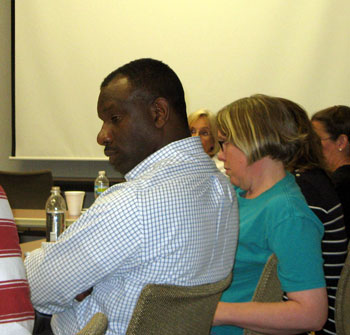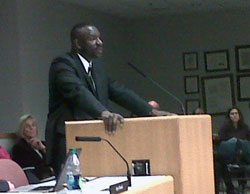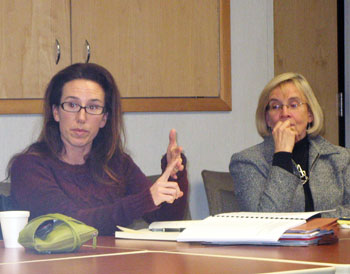Column: Disparate Impact of AAPS Cuts?
Editor’s note: This marks the launch of a new column in The Chronicle, focused on Ann Arbor Public Schools and other educational issues. Readers might know Ruth Kraut from her commentary on Ann Arbor Schools Musings, where she’s been writing about these issues for several years. For recent background on The Chronicle’s coverage of AAPS, see “Milestone: Why You Keep Running a Marathon.”
Next week, the board of the Ann Arbor Public Schools will need to cut about 5% from the district’s budget. That’s a reduction of about $8.6 million. Teachers have already taken a 3% pay cut.
Per-pupil funding for next year ($9,025) will be less than the per-pupil funding of 12 years ago in 2001-2002 ($9,034). So it’s no surprise that we’re at the point where cuts are painful. Cutting teachers, cutting programs – none of it is happy news. There will be consequences. The question is, what kind of consequences?
In the civil rights world, a “disparate impact” occurs when a policy is non-discriminatory in its intent but affects a “protected class” of people in a disproportionate way. In Michigan’s Elliott-Larsen Civil Rights Act, for example, these protected classes include race, religion, color, national origin, age, sex, height, weight, and marital status.
AAPS is a district with a large achievement gap – between white students and African American and Hispanic/Latino students. And this gap has persisted for many years. Although in state civil rights law, income is not a protected status, income is highly correlated with race, age, and marital status. District-wide, there is also an achievement gap that is related to income: Poor kids are more likely to do poorly in school.
So it’s important to consider the AAPS budget from a perspective of potential disparate impacts. On the surface, the proposed budget cuts treat all students equally. But if we look deeper, would we find that certain budget cuts worsen – or perhaps improve – the achievement gap?
Three proposed budget cuts have raised a significant amount of opposition this year: (1) eliminating high school transportation; (2) cutting reading intervention teachers; and (3) cutting seventh hour or making it a tuition-only option. Together, these three account for just under $1.5 million of the $8.6 million in cuts. Do these cuts, in particular, have a disparate impact on any groups? [Full Story]













